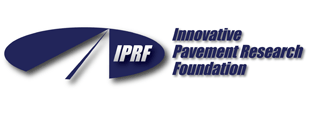RESEARCH PROBLEM STATEMENT (Posted July 23, 2002):
The
maturity method for measuring concrete strength produces an estimate
of strength based on the actual temperature history experienced
by the concrete in place. As such, the maturity method attempts
to address the differing hydration rates experienced by test specimens
compared to the concrete in place. The maturity method requires
development of a strength-maturity relationship that is specific
to the mixture. Application of maturity has been increasing and
certain state agencies have made it a standard test for determining
when to open concrete highway pavement to public traffic. Use
of maturity in the airport environment has been limited. Potential
benefits to the airfield concrete pavement industry includes:
- Decreasing
time to open critical areas to traffic (such as intersections,
runway ends and full panel replacement),
- Shortening
the time between staged paving operations,
-
Improving joint sawing operations,
- Reducing
the number of strength tests, and
- Improving
reliability of acceptance techniques through testing in-place
material.
Conventional
use of maturity testing requires a maturity index value (also
called a time-temperature factor, or TTF) or an "equivalent age"
value to be read from a maturity meter and/or calculated from
a time-temperature profile. This maturity index value (or equivalent
age) must then be compared to the established strength-maturity
relationship curve to convert it to a strength value. Technology
is on the edge of being able to automate this conversion and provide
information in units that a contractor or engineer can understand
in real time.
The
primary limitation of conventional maturity measurement stems
from the need to convert the temperature readings from embedded
thermocouples, or the degree-hours (i.e. TTF) units from maturity
devices, to strength values.
OBJECTIVES:
The
objective of the research will be to demonstrate a non-complex
solution for measuring the strength of airfield pavements in real
time using concrete maturity theory. The field-demonstration(s)
shall be made on at least one site in the airport environment.
The participation of a paving contractor is required for this
research project. As part of the proposal and inherent to the
research objective, the investigator shall prepare and describe
a research plan outlining:
- The airport
application test site(s), including documents from the airport
sponsor and/or operator and contractors
- The concrete
mixture components, proportions and test requirements
- The planned
location of maturity probes
- Comparison
(destructive) test regimes, if proposed
- Properties
of the maturity testing equipment, particularly with regard
to field durability, ease of use, accuracy, and data logging
capability. This should include statements prepared by the contractor
and the quality control laboratory.
PRODUCTS:
The
deliverables are three documents:
1.
The research team will provide a test plan for review and comment
by the project Technical Panel. That test plan will incorporate
panel comments prior to executing the field portion of the research.
2.
The investigator shall provide a final report, documenting all
of the testing techniques, testing regimen used for comparative
analysis, materials, mixtures, equipment, results and methods
used in the investigation. The submittal shall include two copies
of the final report manuscript along with an electronic copy of
the report, electronic artwork, photos, etc. The electronic copy
of the report must be compatible with industry recognized desktop
computer publication software (either Microsoft Word or Adobe
Acrobat).
3.
The investigator will provide a short Executive Summary report
separate from the final report. The Executive Summary report should
be between 2 and 8 pages in length, include summary charts, graphics,
etc that are necessary to report the results of the research project.
The submittal shall include two copies of the Executive Summary
report along with an electronic copy of the report, electronic
artwork, photos, etc. The electronic copy of the report must be
compatible with industry recognized desktop computer publication
software (either Microsoft Word or Adobe Acrobat).
SPECIAL CONSIDERATIONS:
The
technical panel expects to see maturity equipment with advanced
technology. Proposals should describe any advanced features of
the equipment with regard to eliminating data conversion, linking
to central monitoring computers, low-cost implementation, unit
recycling, etc. Due to the expected short duration of this project,
the investigator will be responsible for coordinating the progress
of the work by the utilization of conference calls with the technical
panel to review the progress of the research effort. The investigator
shall record minutes of the calls and distribute the written minutes
and a written progress report to the panel members within 2 days
of the calls. The minutes and report will each be two pages maximum
in a format to be specified.
IPRF
PROCEDURAL GUIDANCE:
Persons
preparing proposals are urged to review the following documents
to be sure that there is a full understanding of IPRF procedures
and requirements. Proposals must be prepared in the format specified
in the instruction documents. The documents needed to prepare
the proposal include:
FUNDS
AVAILABLE: Not to Exceed $47,000
CONTRACT
TIME: Not to exceed 6 Months
PROJECT
DIRECTOR: Gerald F. Voigt, P.E., (847) 966-2272, gvoigt@pavement.com
ESTIMATED
NOTICE TO PROCEED DATE: September 15, 2002
PROPOSAL
DUE DATE: August 23, 2002 not later than 4:00 P.M. (EDST)
DELIVERY
INSTRUCTIONS:
Deliver
six (6) copies of your proposal to:
Mr.
Gerald Voigt, Project Director
5420 Old Orchard Road, Suite 100
Skokie, IL 60077
